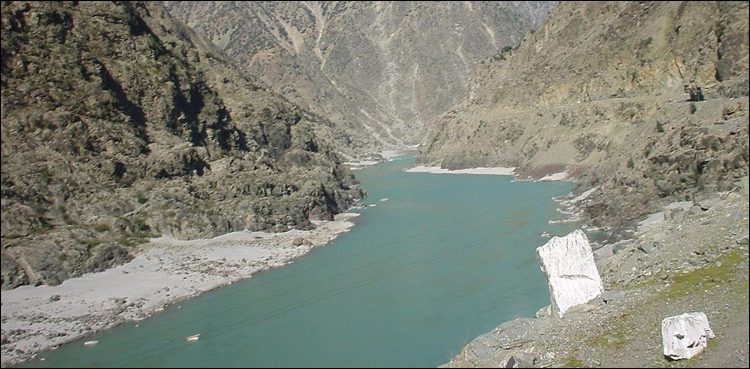Engineering Post Report
Reproduced here is the Foreword to the Executive Summary , running in 67 pages, on Kalabagh Dam project prepared and published by WAPDA and Kalabagh Consultants under auspices of Government of the Islamic Republic of Pakistan, United Nations Development Programme (UNDP) and International Bank for Reconstruction and Development (IBRD) in October 1988 just to refresh the memory of those who matter in the corridors of power for sake of Pakistan, its people and future generations.
“The future development of Pakistan , which has been handicapped by shortage of power and water for irrigation, is greatly dependent on the timely commissioning of of Kalabagh Dam Project. With only small quantities of indigenous oil, gas or fossil fuels, the country has to depend primarily upon hydropower for cheap electricity. Besides meeting industrial and domestic needs, electricity is vitally needed to run the irrigation and reclamation tubewells. The project will provide extensive additional water potential for sustaining agriculture , the mainstay of Pakistan’s economy, and will also provide large amounts of hydropower and in addition will substantially reduce the frequency and severity of damage to life and property due to the floods in the downstream areas.
“The Kalabagh Dam Project will be located on the Indus river in the north western part of Pakistan about 120 miles (193 km) downstream of of the existing Tarbela dam and will control one of the world’s greatest catchments, over 100,000 sq miles ( 250,000 sq km) in area. The 260 ft (79.2 m) high dam will create a reservoir to provide 7.9 MAF (9750 million cu m ) of total storage. The annual utilization of this storage for increasing irrigation supplies will be on average about 4.5 MAF (5500 million cu m ) , varying between 3. 6 MAF ( 4400 million cu m) in a relatively wet year to the full live storage capacity of 6.1 MAF (7500 million cu m ) in a dry year. The project will have an initial installed capacity of 2400 MW generating over 11,400 million KWh of energy annually. The ultimate installed capacity will be 3600 MW which will be one of the largest single generating stations in Asia.
“The Project Planning Studies, detailed designs and tender documents were carried out with funds provided by the UNDP. The World Bank supervised the studies in the capacity of Executing Agency and the Pakistan Water and Power Development Authority (WAPDA) acted as the Government Cooperating Agency. Kalabagh Consultants (KC), a joint venture of five engineering firms (Binnie & Partners, and Preece, Cardew & Rider of the United Kingdom, Harza Engineering of USA and Associated Consulting Engineers and National Engineering Services of Pakistan) carried out the studies. The review and scrutiny of the project by an independent international panel of experts comprising Drs Londe, Lombardi, Klaus John, Sherard, John Lowe, and Parmakian has helped ensure that the project proposals are technically sound and conform to the economic design under the present day state of the art. In addition the sedimentation and backwater studies were reviewed and the limits of their impacts ascertained by independent sedimentation experts including Drs. Kennedy, White, Mahmood and Lianzhen. Detailed studies of sedimentation ,backwater effects, degradation downstream , floods, recession agriculture, navigation and resettlement and relocation have ensured that the environmental impacts have been defined and acceptably minimized.
The project cost (based on June 1987 price levels) including engineering, administration, physical contingencies and price contingencies is estimated US Dollars 3463 million (Rs 60610 million) including the foreign currency component of US Dollars 1906 million. Some of early feasibility studies and reports are briefly mentioned here:
The first feasibility study of the Kalabagh Dam Project was conducted by M/s Tipton and Hill back in 1953 in which retention level of 925 feet of the Kalabagh Dam was suggested.
M/s Chas T. Main conducted another feasibility study in 1960. The retention level of 925 feet was proposed in this report too.
Another study pertaining to Kalabagh Dam Project was conducted by the World Bank Group under M/s Peter Lieftinck in 1967. The report of this study also favoured the retention level of 925 feet.
M/s Harza and WAPDA engineers also carried out a feasibility between the period 1967-72 and proposed the same retention level.
In 1975, the Associated Consulting Engineers (ACE) of Pakistan suggested the same retention (925 feet) in its feasibility report.
The Kalabagh Dam Consultants in the detailed project planning phase, carried out between February 1982 to March 1984 , had also planned the retention level of 925 feet.
The Kalabagh Consultants had prepared the detailed designs of civil works, firmed up the cost estimates and finalized the contract documents of civil works by December 1985.








